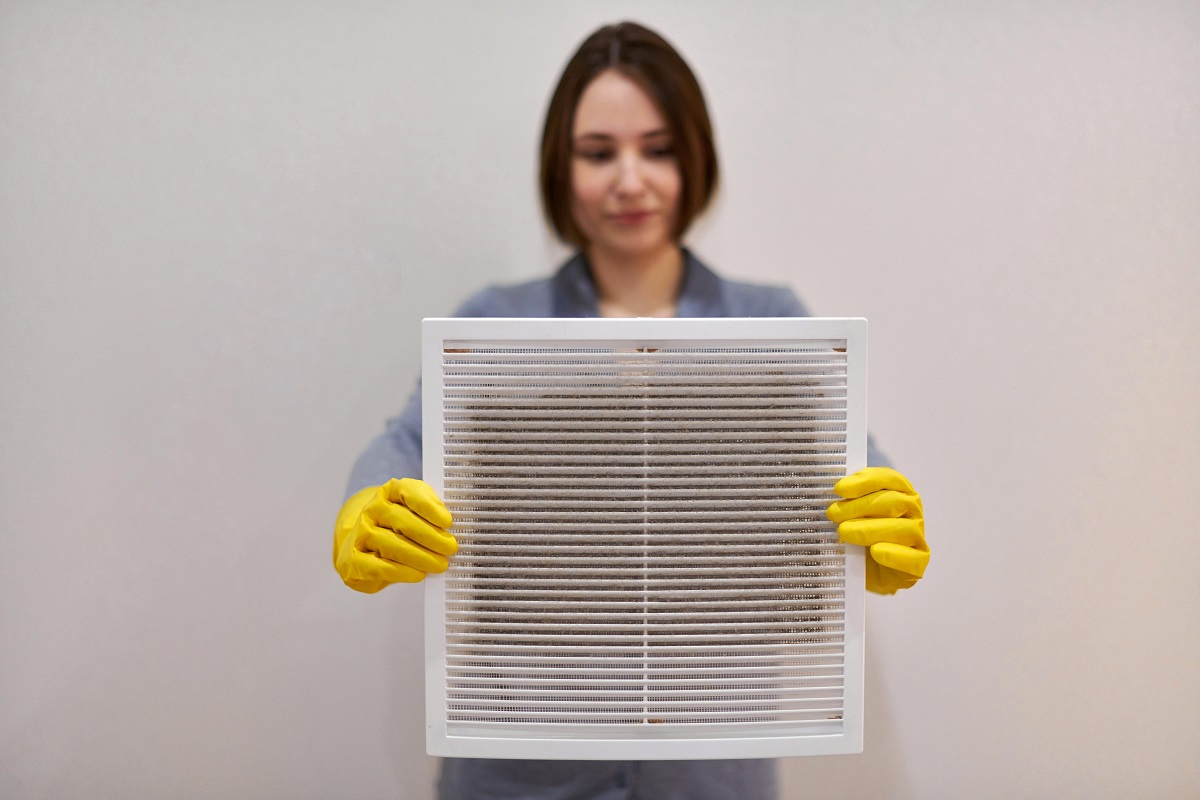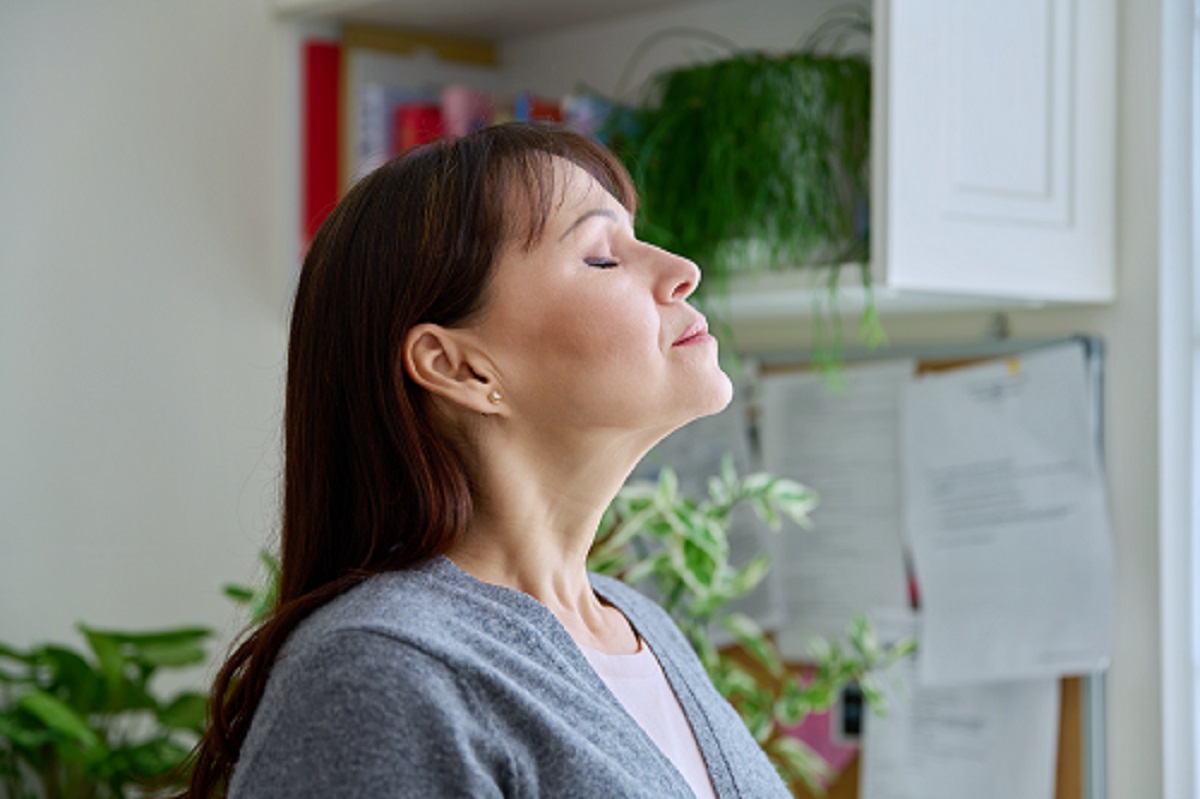Need a Comprehensive Home Health Assessment? Uncover Hidden Health Risks

Why Do You Need a Comprehensive Home Health Assessment? Uncovering Hidden Health Risks
If you are a homeowner, the thought of hidden mold can be unsettling. You're right to be concerned about the musty smells and dark spots that might appear in a damp basement or bathroom. Mold can cause health problems and is a sign that something is wrong. But to truly protect your family's well-being, you need a comprehensive home health assessment to uncover the full spectrum of hidden health risks that go far beyond what you can see or smell.
Focusing only on mold is like looking for only one piece of a giant puzzle. Your home is a complex environment, and many other invisible factors can affect your health every day. These can range from gases released by new furniture to tiny particles in your drinking water. To create a truly safe space, you need to understand all the potential issues. At Nestwell, we believe knowledge is power. Our goal is to empower you with the insights needed to transform your house from a source of worry into a truly healthy home.
Table of Contents
- Key Takeaways
- What Are the Telltale Sick Home Symptoms?
- The Critical Reason Why Mold Testing Alone Is Insufficient
- The Home Health Triad: A Framework for a Truly Healthy Home
Key Takeaways
- A focus on mold is a common starting point, but the reason why mold testing alone is insufficient is that it misses the majority of hidden environmental health risks at home.
- Unexplained allergies, feeling tired all the time, and headaches are often sick home symptoms directly linked to a range of environmental factors in your living space.
- A healthy home requires looking beyond mold; a proper evaluation includes air quality and water quality testing and an analysis of other environmental exposures.
- A holistic home health audit provides a complete identification of home environmental hazards, giving you a clear picture and actionable steps for improvement.
- Switching to proactive home health screening is the key to moving from worrying about potential sickness to taking control of your family's well-being.
What Are the Telltale Sick Home Symptoms?
Have you ever noticed that you feel better when you are away from home? Maybe your headaches disappear on vacation, or a nagging cough clears up after spending a weekend outdoors. If so, you could be experiencing what experts call "Sick Building Syndrome," but in your own house. This happens when elements inside your home environment make you feel unwell.
It's easy to dismiss these feelings as just stress or a common cold. But often, these sick home symptoms are your body's way of telling you that it is reacting to the environmental factors around you.
Recognizing these signs is the first step to finding a solution and feeling better. Your home should be a place of rest and healing, not a source of mystery illnesses.
Here are some common signs that your home might be affecting your health:
- Constant Fatigue or Brain Fog: Do you feel tired all the time, even after a full night's sleep? Or do you find it hard to concentrate or remember things while at home? This feeling of mental cloudiness can lift when you leave the house for a while. This is a classic sign that something in your indoor environment, like poor air quality, could be draining your energy.
- Persistent Allergies, Coughing, or Breathing Issues: If you are always sneezing, coughing, or have a stuffy nose that isn't connected to a cold or seasonal allergies, your home could be the culprit. Dust mites, pet dander, mold spores, and other airborne particles can irritate your lungs and airways, leading to constant discomfort.
- Unexplained Headaches or Migraines: Frequent headaches that seem to come out of nowhere can be frustrating. Sometimes, they are triggered by things you can't see or smell, such as invisible gases from cleaning products, new furniture, or even problems with your home's ventilation system.
- Skin Irritation, Dryness, or Rashes: Your skin is your body's largest organ, and it can be very sensitive to its environment. If you notice persistent dry skin, itchiness, or unexplained rashes, it could be a reaction to chemicals in your laundry detergent, contaminants in your water, or low humidity levels in your home.
- Worsening of Chronic Conditions: For people with existing health issues like asthma, living in a home with poor air quality can make their condition much worse. If you find you are using your inhaler more often or your symptoms are becoming more severe, it's a strong signal to investigate your home's environment.
These issues are more than just annoying; they are potential symptoms of environmental toxins in homes. They show that your body is reacting to something in your surroundings. Paying attention to these clues is crucial for uncovering the root cause and creating a healthier living space for you and your family.
The Critical Reason Why Mold Testing Alone Is Insufficient
When homeowners worry about their house making them sick, their first thought is often mold. Getting a mold test seems like a logical first step. While testing for mold is important, it is a tiny part of the bigger picture of home health. Believing that a clear mold test means your home is safe is a dangerous mistake. The truth is, relying only on a mold test gives you a false sense of security.
The reason why mold testing alone is insufficient is that it overlooks a huge number of other invisible threats that could be present in your home. Mold is often a symptom of a larger problem, like too much moisture or poor airflow. Those same conditions can lead to other health hazards. A home can be free of dangerous mold but still be filled with other contaminants that affect your well-being.
Think about it this way: a mold test looks for one specific problem. It’s like a mechanic only checking your tires when you bring your car in for a full inspection. They might miss a problem with the engine or the brakes.
To truly understand your home's health, you need to look at everything.
Here is a simple breakdown of what a mold test looks for versus what it misses:
A Mold Test Typically Looks For:
- The presence of specific types of mold spores in the air or on a surface. It can tell you if you have a mold problem and what kind of mold it is.
What a Mold Test Completely Misses:
- Volatile Organic Compounds (VOCs): These are invisible gases that are released from many common household items. This process is called "off-gassing." Sources of VOCs include paint, new carpets, mattresses, furniture made from particleboard, and even scented candles and air fresheners. These gases can cause headaches, dizziness, and long-term health problems.
- Radon: This is a natural radioactive gas that has no color, taste, or smell. It comes from the ground and can seep into homes through cracks in the foundation. Radon is a leading cause of lung cancer in non-smokers, and you would never know it was there without a specific test.
- Airborne Particulates: Your indoor air is filled with tiny particles you can't see. These include dust, pet dander, pollen that gets inside, and soot from cooking or burning candles. Breathing these in can trigger allergies and asthma.
- Contaminants in Your Drinking Water: Your tap water can contain things other than just water. Depending on where you live and the age of your home's pipes, your water could have lead, chlorine, pesticides, or other chemicals in it. A mold test does nothing to check the purity of your water.
- Lead and Asbestos: In older homes, lead can be found in paint and old water pipes. Asbestos can be found in insulation, floor tiles, and other building materials. Both are very dangerous if disturbed and released into the air.
Relying on a single test leaves your family exposed to numerous other hidden environmental health risks at home. It prevents you from seeing the complete picture of your home's environment. To truly create a safe haven, you need a method that examines all of these potential dangers, not just one.
The Home Health Triad: A Framework for a Truly Healthy Home
Trying to understand all the different things that can affect your home's health can feel overwhelming. To simplify this, we look at the three core pillars of a healthy home. We call this framework the "Home Health Triad." By breaking it down into these three main areas, it becomes much easier to see how everything is connected.
This framework helps us organize and investigate all the potential contaminants of the Home Health Triad. Instead of guessing what might be wrong, we can systematically check each pillar to make sure your home is healthy from every angle. This approach ensures that no stone is left unturned in the search for a safe and healthy living environment.
Pillar 1: Air Quality Beyond Mold
When we think of air quality, we often think of outdoor smog or pollution. But the air inside your home can be many times more polluted than the air outside. Since we spend most of our time indoors, the quality of the air we breathe is incredibly important for our health. Going beyond mold is the first step.
Your home's air can contain many invisible threats. New furniture, carpets, and even the paint on your walls can release invisible gases called Volatile Organic Compounds (VOCs) for months or even years. These can cause headaches and irritate your lungs. Another serious threat is radon, a gas with no smell or color that can seep into your basement from the ground below. Finally, everyday activities like cooking can release tiny particles and gases into the air, while dust and pet dander are always floating around. A complete assessment looks at all these airborne threats, not just mold.
Pillar 2: Water Purity
Clean water is essential for life. We use it for drinking, cooking, and bathing every single day. Most of us trust that the water coming from our taps is safe, but that isn't always the case. A truly comprehensive home health check must include air quality and water quality testing because both are vital to your well-being.
Your water travels a long way to get to your faucet. Along the way, it can pick up contaminants. In older homes, lead from old pipes can leach into the drinking water, which is especially dangerous for children. The chemicals used to treat water at a city plant, like chlorine, can also create byproducts that may be harmful. In some areas, pesticides from nearby farms can get into the water supply. Testing your water is the only way to know for sure what's in it and to ensure it is pure and safe for your family.
Pillar 3: Environmental & Material Factors
The third pillar covers the physical things your home is made of and the invisible forces within it. These environmental and material factors can hide some of the oldest and most serious health hazards. What your home is built from matters just as much as what is floating in the air or water.
For homes built before 1978, lead-based paint is a major concern. If the paint chips or turns to dust, it can be accidentally ingested or inhaled, causing serious health problems. Similarly, older homes may contain asbestos in insulation, ceiling tiles, or flooring. If these materials are damaged, they can release tiny fibers into the air that can cause cancer. Beyond physical materials, some people are also concerned about electromagnetic fields (EMFs) from wiring and electronic devices. A complete assessment considers these structural and environmental elements to provide a full picture of home safety.
The Solution: What is a Holistic Home Health Audit?
Now that you understand the many hidden risks that could be in your home, you might be wondering what the solution is. The answer is not a collection of single tests for mold, radon, and water. The answer is a single, unified approach that looks at everything at once. This solution is called a holistic home health audit.
A holistic home health audit is a deep and thorough investigation that provides a complete identification of home environmental hazards. Unlike a mold test that only looks for one thing, this audit examines all three pillars of the Home Health Triad: your air, your water, and the materials in your home. It connects the dots between your environment and your health, giving you a clear and complete picture.
This process is designed to be empowering, not scary. It moves you from a state of worrying about unknown problems to having a clear plan to fix them. The goal of a comprehensive indoor environmental assessment is to give you actionable steps you can take to make your home healthier right away. It's about turning complex information into simple, easy-to-follow solutions.
Here is how our simple, streamlined process works:
- Start with Insight: The first step is quick and easy. You begin by taking our free, 3-minute online assessment. By answering a few simple questions about your home and your health concerns, you give us the information we need to create an initial snapshot of your home's unique risk profile.
- Get Your Personalized Report: We take the information from your assessment and analyze it using our data-driven system. We then provide you with a detailed report that is tailored specifically to you. This report identifies potential hazards across all three pillars of the Home Health Triad—air, water, and environment—and explains what they mean for your family’s health.
- Receive Actionable Steps: We don’t just give you a list of problems; we give you solutions. Your personalized report includes clear, prioritized recommendations. We tell you exactly what steps to take to reduce or eliminate the risks we’ve identified. We empower you with a simple checklist so you can start improving your home's health immediately, focusing on the most important things first.
This approach is authoritative because it is based on data and science. It is empathetic because we understand your worries about your family's health. And most importantly, it is empowering because it gives you the knowledge and the tools to take control and create a truly healthy home.
Your Guide to Proactive Home Health Screening
For too long, we have treated our health by reacting to sickness. We wait until we have symptoms, and then we go to a doctor to find a cure. But what if we could prevent an illness before it even starts? When it comes to your home environment, you can. This is the power of proactive home health screening.
Instead of waiting for unexplained headaches, constant coughing, or fatigue to take hold, you can take a step to identify and remove the root causes from your home today. Proactive home health screening is about shifting your mindset from worrying about sickness to taking control of your family's wellness. It's about being a guardian of your family's health, creating an environment where everyone can thrive.
Imagine the peace of mind that comes from knowing you have done everything you can to make your home a safe and healthy space. Imagine knowing that the air your children breathe is clean and the water they drink is pure. You no longer have to wonder if a hidden hazard is secretly affecting your loved ones. You have the full picture and a clear plan. This is not just another home improvement project; it is a direct investment in your family’s long-term health and happiness.
You have the power to change your home from a place of potential risk to a true sanctuary of well-being. The journey starts with a single, simple step. Don't wait for symptoms to appear. Be proactive.
Ready to stop worrying and start improving? Take control of your home's health today. Get your free, personalized risk snapshot with Nestwell’s 3-minute assessment.
Frequently Asked Questions (FAQ)
Q1: How is a comprehensive indoor environmental assessment different from a standard home inspection?
A: This is a great question. A standard home inspection is designed for a real estate transaction. It focuses on the structural and functional parts of your house, like checking the condition of the roof, the foundation, and the electrical systems. Its job is to find problems that need expensive repairs. Our comprehensive indoor environmental assessment, on the other hand, is a specialized health audit. It is designed specifically to identify environmental factors inside your home that can directly impact your family's health and well-being. We look for hidden health hazards, not just structural problems.
Q2: I live in a new house. Should I still be concerned about environmental toxins?
A: Yes, absolutely. It's a common belief that new homes are automatically healthy, but that's not always true. New homes are often major sources of indoor air pollution. The process of "off-gassing," where new materials release chemicals into the air, is strongest in new builds. Things like fresh paint, new flooring, cabinets, and furniture can release high levels of VOCs (Volatile Organic Compounds) for months. A new build does not guarantee clean air or pure water, so an assessment is still very important.
Q3: What happens after I take Nestwell’s initial 3-minute assessment?
A: The 3-minute assessment is your first step toward getting clarity. Immediately after you complete it, the assessment provides you with an initial risk score based on your answers. From there, we work on creating your personalized report. This report dives much deeper, detailing the potential hazards in your home based on our analysis. Most importantly, it gives you a prioritized, actionable checklist of simple steps you can take to start making improvements right away.
Q4: Is this service only for people who are already sick?
A: Not at all. This service is for everyone who values health and wellness. It is perfect for people who are already experiencing symptoms and want to find the cause, but it is just as valuable for those who are perfectly healthy and want to stay that way. It's especially useful for anyone committed to prevention, such as parents with young children, expecting mothers, or individuals who simply want to optimize their health by creating the safest possible living environment.






